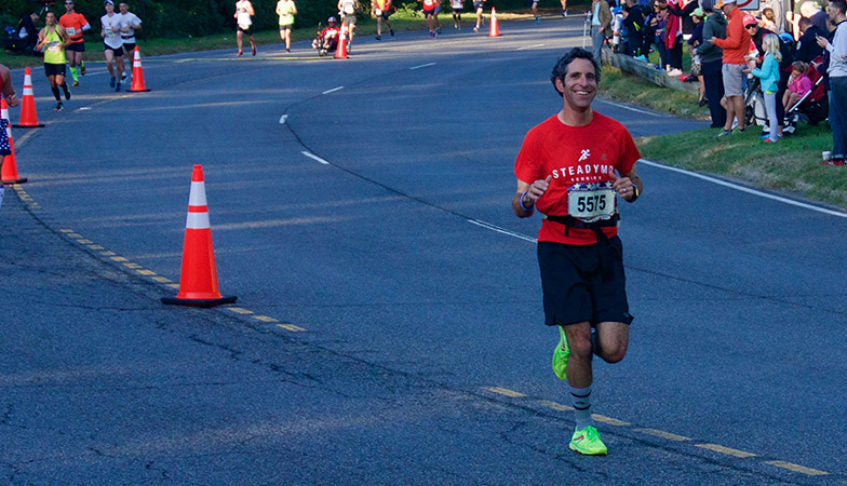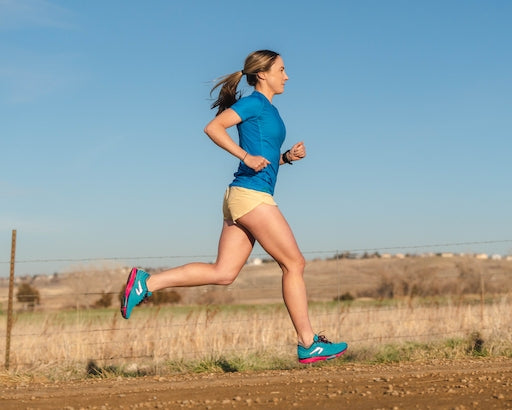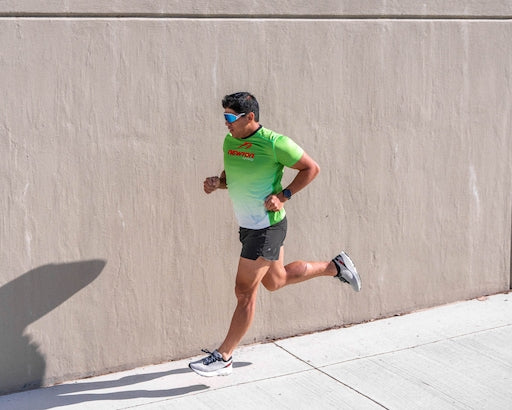
Injury Prevention
uncategorized2 July 2019
By Dr Josh Emdur,
How many runners have been told to stop running? It’s the same old story over and over again. An everyday runner goes to see their non-runner primary care physician for evaluation of pain in the _______________(insert knee, foot, ankle, thigh, neck, back). The physician probes and prods and typically makes a diagnosis of Runners Knee, IT Band Syndrome, Plantar Fasciitis, Achilles Tendonitis, Bursitis, Shin Splints, Lumbago, etc…. As a physician it is fair for me to say that we are instilled a very scientific doctrine in medical school… If it hurts when I do X then you should stop doing X.
While this doctrine holds true in a common sense way, it does not provide a satisfactory response to a runner. The running habit is strong. One of my friends really gets infuriated when people tell him to just bike. His response, “I hate biking, it does not make me happy”.
The most common myth that I hear from uninformed physicians and patients alike is that running will ruin your joints and cause arthritis. A 2013 cross-sectional study of 74,752 runners concluded that running actually reduced Osteoarthritis in the hip and need for hip replacement surgery. In a 2017 study of 2,637 participants published in the Journal Arthritis Care & Research found no correlation between running and arthritis of the knee.
Despite the slew of benefits that incorporating running into your life can have, it does come with some potential pitfalls. I hope you find value in the following tips to help reduce your risk of injury and maximize your enjoyment in the sport.
- Avoid over training: This is one of the most common things I see in athletes that leads to injury and occurs when you either over stress your body from exertion or do not allow for proper rest and recovery between workouts. In the recent book Peak Performance Magness and Stulberg present a growth equation growth=stress+rest. Interestingly enough, most find the rest portion of the equation more difficult to accomplish.
To manage training stress I recommend using tools like heart rate monitors or running power meters to help athletes quantify what easy really is to them. I tend to agree with many of the philosophies presented by Dr. Phil Maffetone in The Big Book of Endurance Training and Racing and especially like his theory of training slower to race fast!
- Concentrate on form: One of the easiest ways to decrease impact on your joints is to shorten your stride. Any changes in running form should be done gradually. In my earlier days of distance running I was plagued by IT problems that went away once I purchased my first pair of Sir Issac Newtons in 2010. By focusing on increasing my cadence I quickly improved my running economy, decreased pain, and increased pace all without increasing my weekly miles.
- Allow your body to properly warm-up: I was a child of the 90s where every practice started with a stretching circle. While that ritual of sitting around in a circle with my team was great, the scientific literature has not proven its effectiveness in preventing injuries for runners. Instead start your warm up by using exercise bands to activate your muscles. Once the muscles are activated you are ready to start an easy active warm up consisting of low intensity jogging. Remember that the shorter the race the longer the warm-up. After you are warm dynamic stretches and mobility drills will take you to the next level of performance.
- Cross Train: Having an aerobic base is the foundation of endurance training. Until the foundation is poured it is impossible to build the fitness needed to perform on race day. The base is built over years and requires long hours of easy aerobic training. Cycling, ski touring, cross country skiing, hiking, walking, swimming, elliptical, or anything that gets you outside and puts a smile on your face while increasing your heart rate is a great thing to do. For my diehard road and track stars I recommend hitting some trails to work some different muscles.
- Strength Training: Judging from my social media feed, runners are getting on board with strength training (or at least they like to take photos of themselves doing planks). A strong core, hips, and glutes are imperative to stay injury free. Quad strengthening can do wonders for knee pain.
- Stay springy and agile: Mile after mile on the road can take a toll on your body and mobility. Runs should not leave you feeling stiff in rigid. Post workout recovery with stretching, message, and rolling work great. The goal here is to feel better after a run than you did before you started.
- Nutrition: A healthy diet is based in real foods that aren’t processed. I typically only recommend supplements for those who are on a restrictive diet, have absorption problems (from disease or medications), or those with documented micronutrient deficiencies. The best way to get your micronutrients is by eating a balanced diet of fruits, vegetables, and proteins. Supplements are for treating deficiencies! If you are concerned about a deficiency talk to you physician and draw some labs. People need to be mindful of everything they put into their bodies. You truly are what you eat. Just because a supplement is sold at a “health food store” doesn’t mean it is healthy. In my medical career I have seen multiple cases of Vitamin D and Calcium overdose.
- General Health: Just because you’re a runner doesn’t mean you are immune to disease. I have treated many athletes who appear to be the picture of health from the outside, but have unaddressed chronic diseases that they were unaware of. Injury prevention is based in preventative medicine that is best accomplished by partnering with a physician.
Lastly and most importantly :
Learn to listen to your body and act when things are not right. Small problems that are ignored can progress to debilitating injuries if not properly cared for.
Editors Note: Dr Josh Emdur is a long time Newton Runner and one of our newest ambassadors who will be posting on a variety of medical topics for Newton in the future, please check back often and follow him on social media: Instagram; SteadyMDrunning, Facebook; steadymdrunning and twitter @SteadyMDrunning.
Dr Josh and Dr Mark Cucuzzella are also part of the revolutionary new virtual medical practice for runners offered by Steady MD where you can consult them for running specific medical advice directly from the comfort of your home.

